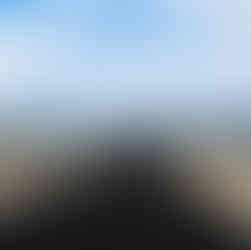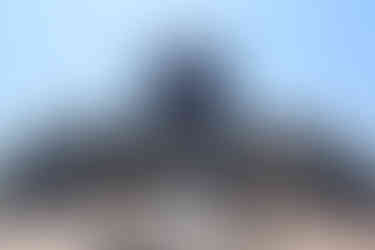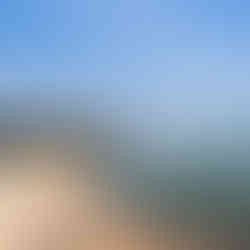Backpacking to the tip of India, in INR 5,000!
- Abhyudaya Pandey
- Sep 20, 2020
- 5 min read
Updated: Sep 21, 2020
"I believe every child in this country should travel for an year across India, after completing their school. It is very cheap to travel here", Pankaj Tripathi.
Although not right after finishing school, I did go to several trips during my college time. It's true, it is cheap and comfortable to travel in India, especially if planned correctly.
In the final year of college, I planned to visit the tip of India, Kanyakumari. Besides Kanyakumari, I also decided to visit Rameswaram, Dhanushkodi and Madurai. My friend joined me at the last minute.
Given the frequency of trains from Chennai to Rameswaram and Kanyakumari, we first decided to visit Rameswaram, careful of the fact that the train crosses the Pamban Bridge during daylight. That meant boarding a train which took longer time, but it was worth it.
Pamban bridge is India's first sea bridge, commissioned on 24th February, 1914. It is a railway bridge that is 2.065 kms long, standing on 143 piers and connects the town of Mandapam in mainland India, with the Pamban island and Rameswaram. It was the longest sea bridge in India until 2010 when the Bandra-Worli Sea Link (2.3 kms) was inaugurated. The bridge can also open up to allow the movement of ferries from underneath. Anemometers are fixed on Pamban Rail Bridge to ensure train safety. They turn signals to red automatically once the wind speed exceeds 58 kms/hour.
After arriving at Rameswaram, we took an auto-rickshaw for a whole day to show us around Rameswaram, take us to Dhanushkodi and drop us back at the Railway station from where we had to catch our train that night to Kanyakumari.
Our first stop was Ramanathaswamy Temple, a Hindu pilgrimage site with ornate corridors, huge sculpted pillars and sacred water tanks. Devotees bathe in the waters of Agni Theertham, off the beach east of the temple. Gandamadana Parvatham is a hill with island views. A chakra (wheel) here is said to bear an imprint of Lord Rama’s feet. As it is not allowed to carry any electronics in the temple, we rented a locker to put our stuff in at a nearby dharamashala.
After that, we went to Dhanushkodi. It is an abandoned town at the south-eastern tip of the island. Just 24 kms off of the coast of Sri Lanka, one's mobile would catch the network through cellphone towers of Sri Lanka, rather than India. The town was destroyed during the 1964 Rameswaram cyclone and remains uninhabited in the aftermath. The beach at Dhanushkodi is the cleanest beach anywhere in India, that I have been to. The beach has the Bay Of Bengal on one side and Indian Ocean on the other.
Upon returning from Dhanushkodi, we explored some more religious sites in Rameswaram along with visiting the House of Kalam, childhood home of former President of India, Dr. A.P.J. Abdul Kalam which has now been turned into a museum. We then visited the Dr. Kalam memorial museum built on his grave site, where his mortal remnants were put to rest.
We were back at the railway station early in the evening, to board our train to Kanyakumari at night. We met a group of oldies who were long time actors in Ramleelas.
We reached Kanyakumari before sunrise. We had pre-booked our room in Kanyakumari. So, we walked to our hotel early in the morning. After doing the check-in, we decided to sleep for an hour before going to the beach to see the sunrise. We were glad not to sleep through it.
After seeing this beautiful sunrise we came back to our hotel to sleep for some time. After taking rest, we headed out to the Vivekananda Rock Memorial. One can reach the Memorial by taking a ferry. It was built in 1970 in honour of Swami Vivekananda who is said to have attained enlightenment on the rock. According to local legends, it was on this rock that Goddess Kumari performed tapas in devotion of lord Shiva.
One can also observe the Thiruvalluvar Statue from the Memorial. The Memorial itself is pretty huge. We spent a couple of hours there.
Back to the mainland, we went to have our lunch. Since the temperature was high, we decided to stay in our room during the afternoon. In the evening, we walked to the Mahatma Gandhi Mandapam, a memorial building where Gandhi's ashes were held after his death. Near the memorial, was the Triveni Sangam. The only place in the world where 3 oceans meet - The Bay of Bengal, The Indian Ocean and the Arabian Sea. One can see the 3 distinct colors of water from there.
We then walked towards the sunset point. There were quite a few tattoo shops along the road and the beach.
We spent some time at the sunset point and saw a beautiful sunset.
We walked back to our room, observed the brightly lit Rock Memorial from the mainland, had dinner on the way and slept, after a whole day of walking and exploring Kanyakumari.

The next day we woke up early to see e sunrise, again.
Seeing so many tattoo shops a day earlier, I got too excited and decided to get one! So, we went to one of the shops and I got my second tattoo!
We then walked to Our Lady of Ransom Church, a Catholic church built in the Gothic Revival architectural style with a pearl-white exterior.
After that we took an auto-rickshaw to the Vattakottai Fort (or 'Circular Fort'), which was built in the 18th century as a coastal defense fortification and barracks in the erstwhile Travancore kingdom. Not only the fort, but the views from there were also beautiful.
Then, we made our way to the Kanyakumari railway station. Took a local train from there to Nagercoil, from where we had a train to Madurai, the cultural capital of Tamil Nadu.
We reached Madurai around 1 at night. An auto driver helped us find and book our accommodations for the night.
Next day we got up and explored Madurai, starting with the Meenakshi Amman Temple. Meenakshi Temple is a historic Hindu temple located on the southern bank of the Vaigai River in the temple city of Madurai, Tamil Nadu, India. It is dedicated to Meenakshi, a form of Parvati, and her consort, Sundareshwar, a form of Shiva.
From there, we went to the Gandhi Memorial Museum, which houses the exhibits & artifacts on Gandhi & India's independence movement, with many photos from his life. The museum also displays the blood soaked clothes of Mahatma Gandhi from the day he was shot.

After that we headed to the Thirumalai Nayakkar Palace while visiting the St. Mary's Church on the way. We also saw a sound & light show at the Palace (not worth it!).
It was now time to head back to the railway station and board our train back to Chennai.
Throughout these days of traveling, we realized that it really isn't so expensive to travel in India. You just need to plan it well enough and you can travel across this country cheaply and comfortably.




































































Awesome blog bro! Highly informative! Sunrise, looks nice!😉👍